Osteochondrosis, the most common spinal disease, now occurs in people of completely different ages, although not so long ago it was considered an exclusively age-related disease.It is characterized by degenerative dystrophic changes in the intervertebral disc, causing pain and creating prerequisites for the formation of herniations and intervertebral hernias.Although osteochondrosis in the chest area is extremely rare, the disease can affect any part of the spine.This poses great difficulties in diagnosis, since the symptoms of the disease are similar to pathologies of the cardiovascular system.However, if a diagnosis is made, it is important to begin treatment for thoracic osteochondrosis immediately.Failure to do so may result in extremely serious complications and loss of performance.
doctor's expert opinion
"Because there are quite a few nerve endings within the disc, any changes in its structure will cause corresponding signals to be transmitted to the brain, resulting in pain in the affected area."
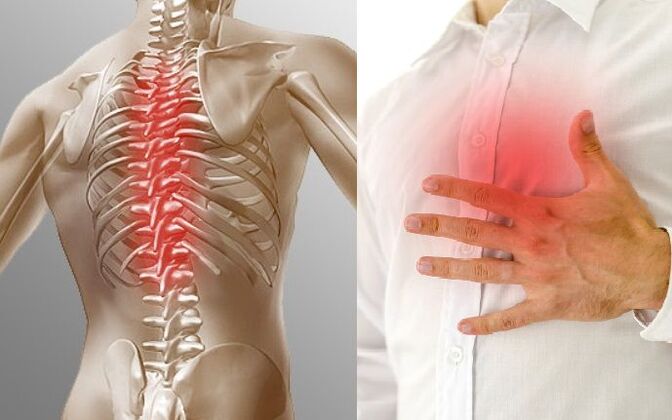
What is thoracic osteochondrosis and its treatment features
Thoracic osteochondrosis accounts for less than 10% of confirmed cases.This is due to low mobility in the thoracic spine.But this is a major concern in thoracic osteochondrosis, since its symptoms are in many ways reminiscent of signs of disease in the cardiovascular system.As a result, patients often initially see a cardiologist or other specialist and undergo a course of treatment that does not produce results, but end up seeing a neurologist when the disease has advanced to an advanced stage.
There are 12 vertebrae in the thoracic spine.They all have intervertebral discs between them, but more commonly it is the first and last spinal motion segments of this section that are affected by osteochondrosis.
In the future, the situation may be complicated by compression of the spinal roots, which are paired at the level of each vertebra in the spinal cord and are responsible for regulating the function of the lungs, abdominal visceral organs, and pelvis.As a result, there are signs of dysfunction, as well as pain that radiates to the ribs, which is called radicular syndrome.
Generally speaking, thoracic osteochondrosis can present with:
- Pain in the shoulder blade, worsening when taking a deep breath;
- Pain behind the sternum in the heart region;
- Cough, shortness of breath due to bronchitis, bronchial asthma, pneumonia and other lung and bronchial diseases;
- Pain in the right ribs due to destruction of the liver, gallbladder and its ducts, which may be due to the development of cholecystitis, metabolic disorders, etc.;
- Left rib pain or shingles due to pancreatic dysfunction, which increases the risk of diabetes;
- Decreased immunity, allergic reactions due to suppression of adrenal innervation;
- Urinary tract disorders due to renal dysfunction and infectious diseases, especially pyelonephritis;
- Disorders of the female and male reproductive organs, including infertility.
In this condition, severe pain causes reflex tension in the back muscles, causing unpleasant sensations in the back muscles and increasing the risk of pinching neural structures.
In the later stages of the development of osteochondrosis of the thoracic spine, when disc herniation, that is, the formation of herniations and intervertebral hernias, is already observed, the risk of functional changes in the internal organs increases sharply.In this case, the pathological protrusion will compress the nerve root, causing the innervation disorder of the corresponding internal organs and the development of the disease.
Therefore, although thoracic osteochondrosis is a fairly rare disease, it can affect the functioning of the entire body.Therefore, comprehensive treatment needs to be started immediately.To do this, you need to contact a neurologist, who will evaluate the patient's condition, study the existing test results and develop an individualized treatment plan.This depends largely not only on the degree of osteochondrosis of the chest (there are 4 stages, the easiest of which is stage 1), but also on the nature of the disease manifestations, the type of concomitant diseases, age and many other factors.This is why, with the right approach, treatment outcomes for patients with roughly the same disc degenerative changes can make a significant difference.
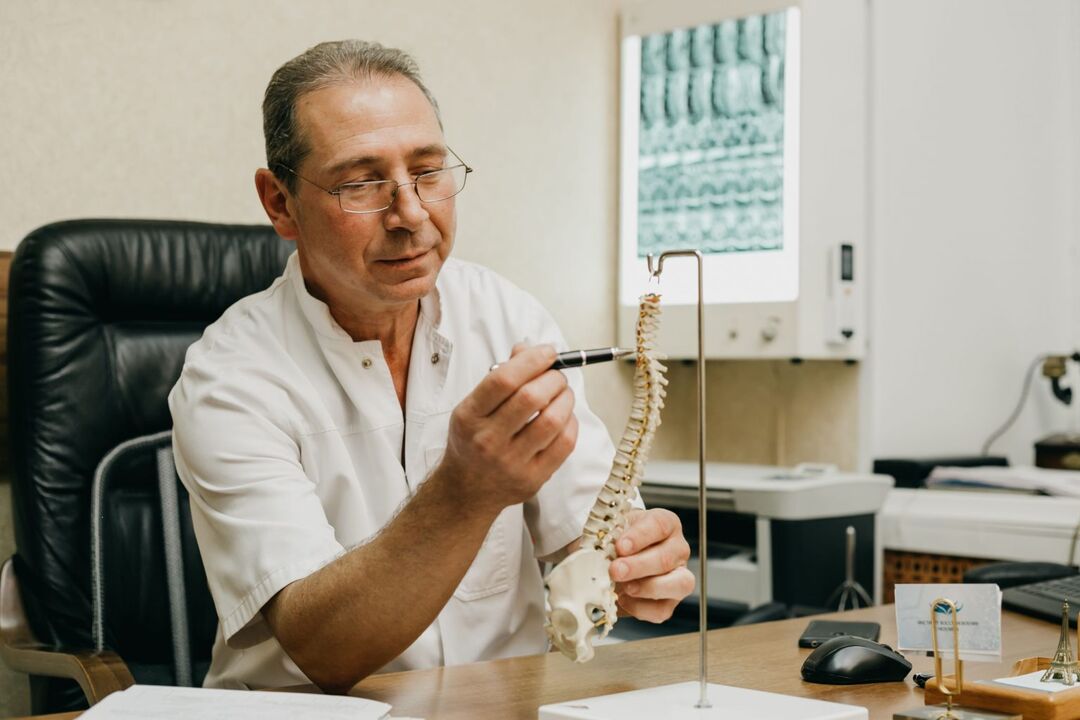
Treatment of thoracic osteochondrosis is always complex.Its purpose is to solve the following problems:
- Eliminate unpleasant symptoms of the disease, thereby improving the patient's quality of life and restoring full functionality;
- Improves the quality of blood circulation in the affected area, thereby activating metabolic processes and promoting the regeneration process of the intervertebral disc;
- Eliminate the causes of osteochondrosis;
- Reduce the likelihood of disease complications.
For this purpose, patients can be prescribed:
- lifestyle modification;
- drug treatment;
- exercise therapy;
- manual therapy;
- traction therapy;
- Physical therapy.
The specific methods recommended to the patient are left to the discretion of the attending physician and depend on the severity of the degenerative dystrophic changes in the spine.Therefore, if osteochondrosis of the chest is diagnosed in the first stages of development (which, unfortunately, is quite rare), it is usually enough to limit oneself to certain adjustments in lifestyle, exercise therapy and manual therapy.
However, if the disease has progressed to the second stage, especially the third stage, additional drug treatment, traction treatment, etc. will definitely be recommended.Moreover, if osteochondrosis has caused intervertebral hernia, especially large intervertebral hernia, accompanied by severe nerve root syndrome, conservative methods cannot eliminate it, and only surgery can improve the condition.
Therefore, in osteochondrosis of the chest and similar lesions elsewhere in the spine, the goal of treatment is to halt the further progression of degenerative changes in the disc and improve the patient's health.With existing, especially large lesions, it is not yet possible to achieve complete restoration of the cartilage tissue, not only of the intervertebral disc, but of any other joint.So, let’s take a look at the main methods of treating osteochondrosis of the chest and their characteristics.
lifestyle modification
After a diagnosis of thoracic osteochondrosis, your doctor will inevitably recommend certain changes in your usual lifestyle.If a patient shows signs of being overweight, he is advised to take steps to lose weight.But any weight loss diet, especially a single-ingredient diet, is contraindicated.Nutrition must be complete and diverse so that the body receives all the substances it needs to function properly and metabolic processes in the intervertebral discs proceed normally.Therefore, the principles of rational nutrition should be adhered to as fully as possible.
Increased physical activity levels are also recommended for all patients, especially those with a sedentary lifestyle.This could be a daily walk, swimming, yoga or Pilates.But strenuous physical activity, especially high-intensity training on simulators, jumping exercises and weightlifting are contraindicated.

If the patient's occupation involves strenuous physical labor, such as heavy lifting, it may be advisable to try a change.This is because, in the presence of osteochondrosis, increased back loading may trigger the rapid progression of degenerative changes in the disc.
It is absolutely recommended that all patients with thoracic osteochondrosis change their mattress to a medium-firm orthopedic mattress and purchase an orthopedic pillow.This will ensure that the physiological curves of the spine are maintained and prevent further degeneration of the discs.
Drug treatment of thoracic osteochondrosis
When treating osteochondrosis, patients are often prescribed a variety of medications.Some of them are recommended to be taken only occasionally, especially during exacerbations of the disease, while others should be used in divided courses, the duration of which is chosen by the doctor.
When prescribing a specific drug, the neurologist must find out whether the patient suffers from concomitant diseases and their nature.This is necessary to exclude contraindications to taking certain medications.
In general, for osteochondrosis of the chest, the following groups of drugs can be prescribed:
- NSAIDs;
- corticosteroids;
- Muscle relaxants;
- vitamins;
- chondroprotectant;
- Products for topical use;
- It refers to improving microcirculation.
NSAIDs
NSAIDs are one of the broadest drug classes as they have a large number of indications for use, including thoracic osteochondrosis.They have anti-inflammatory and analgesic properties, so they are suitable for the exacerbation of diseases and the occurrence of pain.
Today, there are 4 generations of NSAIDs, with the latest 4th generation drugs being considered the safest and most effective.They are characterized by selective action and almost no negative effects on the mucosa of the stomach and duodenum.At the same time, early drugs of this group should not be used, especially for a long time in the presence of gastritis and peptic ulcers of the stomach and duodenum, since they may worsen the condition.
NSAIDs are available in almost every possible dosage form, and you can choose your drug based on how you want to use it.Therefore, in the early stages of osteochondrosis of the chest, it is necessary to use ointments, gels or creams.For more severe pain, capsules or tablets are preferred; if not effective, the drug can be injected intramuscularly.
corticosteroids
This group of drugs belongs to the hormonal class of drugs and contains synthetic analogs of adrenal hormones.Therefore, they have a strong anti-inflammatory effect and are suitable for severe inflammatory processes.But because of the many side effects they can cause, they are usually prescribed as injectable solutions and should only be taken short-term.
Additionally, corticosteroids are used in combination with local anesthetics for paravertebral blockade.They are indicated for pain so severe that it incapacitates a person, but only in a medical setting.Blockade can help quickly relieve even very severe pain and involves introducing a prepared solution to a point near the spine, the area where the spinal roots pass.
It is recommended that such procedures be performed no more than 4 times per year.
muscle relaxants
Muscle relaxants are a group of medications designed to relieve muscle spasms.Let’s remember that they are often the body’s reflex response to pain.Therefore, using muscle relaxants will help reduce the severity of osteochondrosis pain in the chest.
vitamins
When treating osteochondrosis of the chest, it is possible to additionally take a vitamin complex containing a large amount of B vitamins.This is necessary to improve the quality of the transmission of bioelectrical impulses along the nerve, which is particularly important in the case of radicular syndromes.In this way, it is possible to prevent functional disturbances in the organs innervated by the spinal roots of the intervertebral discs located at the level of the disease.
chondroprotectant
Chondroprotectants are a relatively new group of drugs used primarily to treat osteochondrosis of the chest.As active ingredients, they mainly contain compounds that are absolutely natural to the human body and are used by the body for the regeneration of intervertebral discs and other cartilage.
But at the same time, there is still no convincing evidence that this group of drugs is effective in advanced osteochondrosis, although they work well in the initial stages.At the same time, the natural origin of the chondroprotectant ensures a high level of safety.
These medications are available in different dosage forms, including capsules, topical preparations, powders, and injections.The best results are seen with chondroprotectant injections.However, despite all the positive aspects of this class of drugs, they are characterized by high cost, which, coupled with the need for treatment courses of 30 days or longer, makes them not accessible to everyone.
Topical products
In addition to the ointments, creams, and gels containing NSAIDs and chondroprotectants discussed above, treatment of thoracic osteochondrosis can include the use of warming and topical stimulants.Their principle of action is based on stimulation of skin receptors at the site of application.This results in an active flow of blood to the area of application, resulting in an influx of nutrients.As a result, the nutritional quality of the disc is improved and pain is reduced.
Products to improve microcirculation
This group of drugs is also used to improve the quality of blood circulation and activate metabolic processes.
exercise therapy
Therapeutic physical education plays one of the leading roles in the treatment of thoracic osteochondrosis because it can:
- Strengthening of the muscle corset, which will ensure the creation of high-quality support for the spine;
- normalizes muscle tone;
- Activates blood circulation, which will improve metabolic processes in the affected disc.
However, patients should understand that the use of general exercises can have a negative impact on the course of the disease and health, since they do not take into account personal characteristics, the degree of osteochondrosis and existing concomitant diseases.Therefore, in order to effectively treat thoracic osteochondrosis, it is necessary to tailor an exercise treatment program to the individual.
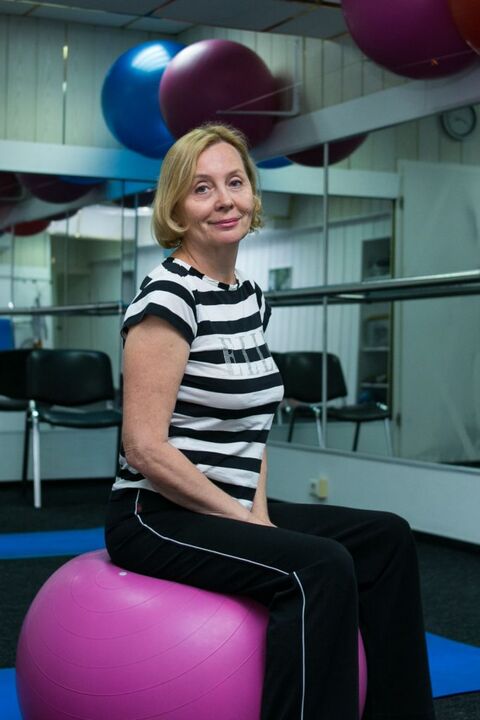
Initially, in order for the patient to master correct exercise techniques, it is recommended to perform exercises under the supervision of an exercise therapy instructor.He can correctly calculate the load and adjust the movements according to the person's physical development level to maximize the effectiveness of the exercises.The procedure will gradually become more complex, and once fully mastered, the patient can practice it at home.But for good results, sessions should be conducted every day.
When performing all therapeutic exercises, it is important to avoid sudden movements.
Manual treatment of thoracic osteochondrosis
One of the most effective ways to treat osteochondrosis of the chest is manual therapy, as it not only works the muscles well but also affects the spine.This is how it differs from therapeutic massage, which is also very useful for osteochondrosis but does not achieve the same results as manual therapy because it does not involve the spine.
But in order for manual therapy to bring only benefits, care needs to be taken when choosing a specialist for treatment, since the impact on the spine must be very precise.Otherwise, the risk of complications is high.
Manual therapy sessions begin with stroking and relaxing the muscles.The doctors worked well on various areas of the back, eliminating spasms and preparing the soft tissues for more active movement.Thereafter, he begins using mobilization and manipulation techniques, which may sometimes be accompanied by mild discomfort and chewing sensations.
The manual therapy approach is characterized by the use of special techniques that have proven to be among the most effective over 20 years and deserve special attention.Not only can they have a beneficial effect on the affected discs, but they can also improve the functional quality of all internal organs, since, as mentioned above, they have a close relationship with the spine.
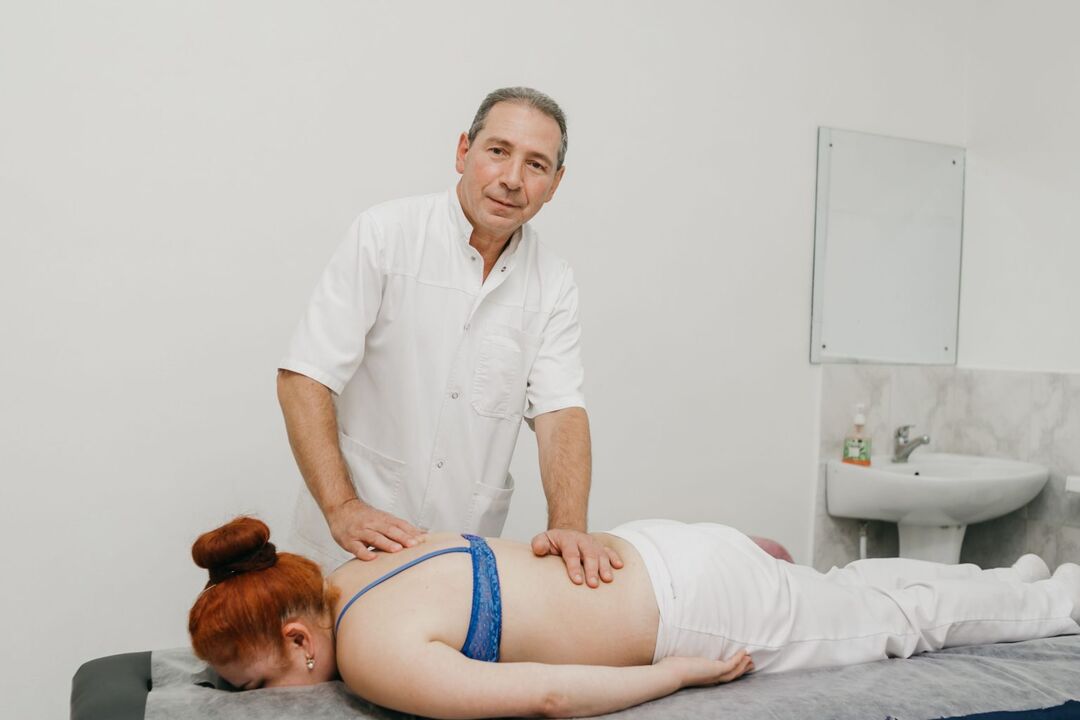
Generally speaking, manual therapy sessions can provide:
- Restores the correct anatomy of the spine by returning the vertebrae to their designated positions;
- Increasing the distance between the vertebral bodies has a beneficial effect on the condition of the disc by reducing the pressure exerted on the disc;
- normalization of muscle tone;
- Eliminate functional blocks;
- Improve the function of the lungs, bronchial tubes, heart and gastrointestinal tract;
- Improve immunity and reduce exposure to allergens.
At the same time, after the first treatment, we observed an improvement in health.Subsequently, the patient noted a gradual decrease in pain, improvement in general condition, and improvement in performance and mood.
physiotherapy
Physiotherapy methods are widely used in the treatment of thoracic osteochondrosis after the completion of the acute phase of the inflammatory process.They can further reduce the severity of back discomfort and have many other positive effects on the body.
Most commonly, for osteochondrosis of the chest, the following are prescribed:
- Introduction of drugs by electrophoresis – This method allows drug ingredients to penetrate deeper into tissues and enhance their therapeutic effects through the use of weak electrical currents;
- Magnet therapy is a physical therapy method based on the beneficial effects of magnetic fields on the body, helping to stimulate blood circulation in the affected area, thus activating metabolic processes and reducing pain and swelling;
- Laser therapy is a method that can achieve significant anti-inflammatory and vasodilatory effects, which will also improve disc condition and reduce pain;
- Ultrasound therapy is a physical therapy procedure that has anti-inflammatory and analgesic properties;
- Dynamic flow is an effective method of physical influence, through its use it is possible to reduce the severity of pain, increase metabolic rate and improve the condition of muscle tissue.
Typically, a physical therapy procedure lasts for 10-15 sessions.But they all have their own contraindications, which must be taken into account when choosing a specific type of exposure.
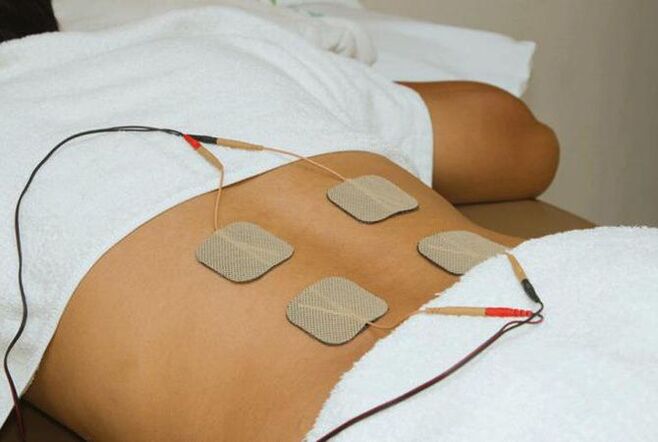
traction therapy
Traction therapy can increase the distance between the vertebrae in the thoracic spine, thereby reducing pressure on the discs affected by osteochondrosis.This will halt the progression of the disease and create optimal conditions for the recovery of cartilage tissue.Traction therapy or spinal traction is performed on a special table under the supervision of a medical professional.
Therefore, although thoracic osteochondrosis is not a common disease, it can significantly reduce a person's quality of life and lead to the development of many internal organ lesions.At the same time, the difficulty of diagnosis is detrimental to the patient because without appropriate treatment, degenerative changes in the disc will continue to worsen.Therefore, complications often occur in this condition, including the formation of herniations and intervertebral hernias.Therefore, it is important not to ignore changes in your health and consult your doctor immediately, and when diagnosing osteochondrosis of the chest, strictly follow your doctor's recommendations.



















